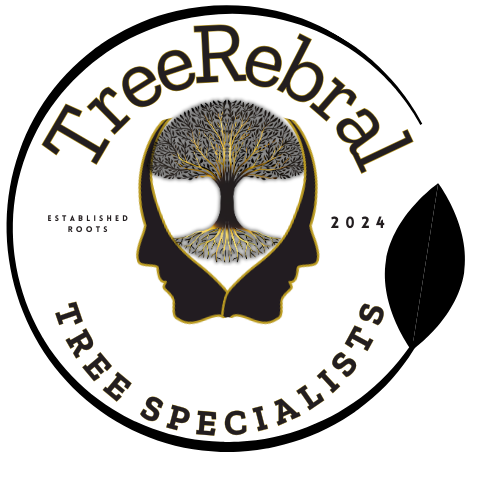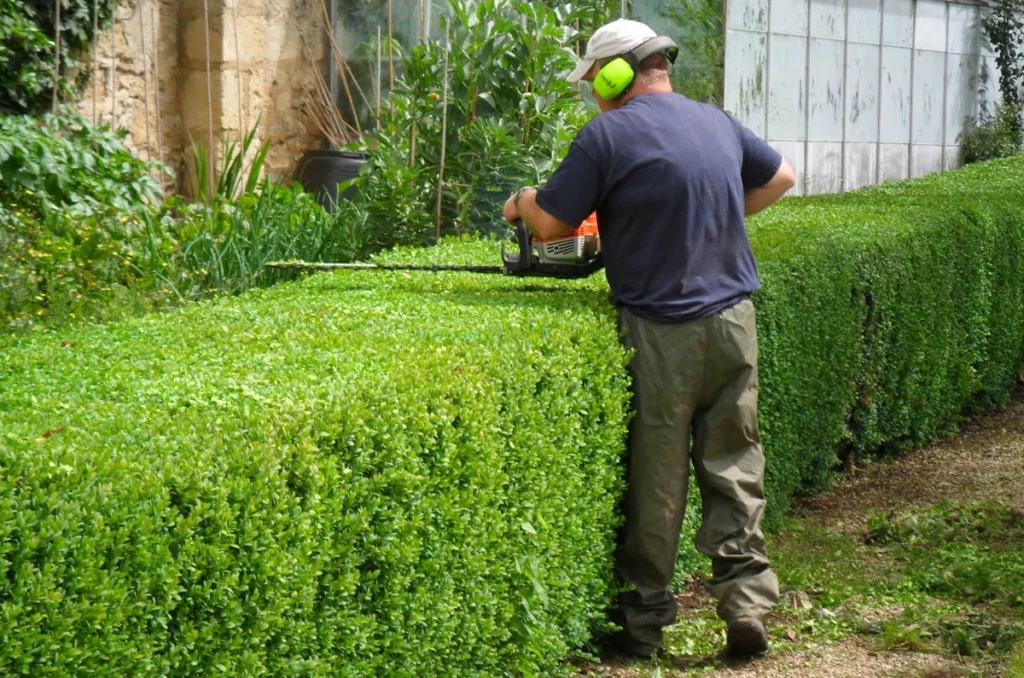Maintaining healthy, attractive hedges isn’t just about grabbing a pair of shears when they look overgrown. Your hedges are living boundaries that need careful, seasonal attention to thrive. Whether you’re protecting your privacy, defining property lines, or simply adding structure to your garden, proper hedge care makes all the difference.
This comprehensive seasonal guide will show you when and how to approach hedge trimming throughout the year. We’ll explore why professional hedge trimming services often deliver superior results, and help you make informed decisions about maintaining your green investments.
Why Hedge Trimming Matters Year-Round
Regular hedge maintenance goes far beyond keeping your garden looking tidy. Well-trimmed hedges serve multiple purposes that benefit both your property and the plants themselves.
Growth Control and Plant Health
Without regular trimming, hedges can become sparse at the base while growing dense at the top. This creates an unbalanced plant that struggles to distribute nutrients effectively. Professional hedge trimming services ensure your hedges maintain their shape while encouraging healthy growth patterns.
Safety and Accessibility
Overgrown hedges can block sightlines at driveways, obstruct footpaths, and create hiding spots that compromise security. Regular trimming keeps these areas clear and accessible.
Sunlight and Air Circulation
Dense, untrimmed hedges can block sunlight from reaching other plants in your garden. They can also trap moisture, creating conditions that encourage disease. Proper trimming allows better air circulation and light penetration.
Property Value and Curb Appeal
Well-maintained hedges significantly boost your property’s appearance and value. They create clean lines, define spaces, and show potential buyers that the property has been cared for.
Many homeowners discover that investing in professional hedge trimming services saves time, ensures better results, and prevents costly mistakes that can damage plants permanently.
Seasonal Hedge Trimming Guide
Understanding when to trim your hedges is crucial for their health and appearance. Different seasons offer unique opportunities and present specific challenges.
Spring Hedge Trimming
Spring marks the beginning of the growing season, making it an ideal time for encouraging healthy development.
Best Timing: Late March to early May, after the last frost but before active growth begins.
What to Focus On:
- Light shaping to maintain form
- Removing winter damage and dead growth
- Encouraging new shoots for fuller coverage
- Trimming flowering hedges after blooms fade
Spring trimming should be gentle. Your hedges are preparing for their most active growing period, so aggressive cutting can stress the plants. Professional hedge trimming services often recommend removing no more than one-third of the growth during spring maintenance.
For formal hedges like privet or box, spring offers the perfect opportunity to re-establish clean lines before summer growth takes off.
Summer Hedge Trimming
Summer brings rapid growth that requires active management, especially for fast-growing species.
Best Timing: Mid-June through August, avoiding the hottest parts of the day.
Key Considerations:
- Managing vigorous growth on privacy hedges
- Multiple light trims rather than one heavy cut
- Maintaining access routes and sightlines
- Shaping informal hedges while they’re actively growing
Summer hedge trimming focuses on control rather than major reshaping. This is when you’ll likely need the most frequent attention, particularly for species like leylandii or laurel that can grow several feet in a single season.
Many homeowners find that summer maintenance becomes overwhelming without professional help. Hedge trimming services can establish regular maintenance schedules that keep growth manageable throughout the peak season.
Autumn Hedge Trimming
Autumn preparation helps your hedges survive winter while setting them up for healthy spring growth.
Best Timing: September through early November, before the first hard frost.
Autumn Priorities:
- Final shaping before dormancy
- Removing weak or damaged growth
- Reducing wind resistance for winter storms
- Cleaning up fallen leaves and debris
This season offers your last chance to address any major issues before winter. Autumn trimming should focus on strengthening the hedge’s structure and removing anything that might cause problems during harsh weather.
Be cautious about timing—cutting too late in autumn can stimulate new growth that won’t have time to harden off before winter, making it vulnerable to frost damage.
Winter Hedge Trimming
Winter’s dormant period provides opportunities for major reshaping and renovation work.
Best Timing: December through February, during dry weather when plants are fully dormant.
Winter Advantages:
- Clear view of hedge structure without leaves
- No risk of disturbing nesting birds
- Plants can recover from heavy pruning before spring growth
- Ideal time for renovation of overgrown hedges
Winter is when professional hedge trimming services often tackle their most challenging projects. Major reshaping, height reduction, and renovation work are best performed during dormancy when plants can direct all their spring energy into recovery.
However, avoid trimming during freezing conditions, as this can damage both tools and plants.
DIY vs Professional Hedge Trimming Services
Deciding whether to tackle hedge trimming yourself or hire professionals depends on several factors.
When DIY Makes Sense:
- Small, manageable hedges under 6 feet tall
- Regular maintenance trimming rather than major work
- You have proper tools and safety equipment
- You’re comfortable working at height
When to Call the Professionals:
- Hedges over 8 feet tall requiring ladders or platforms
- Overgrown hedges needing significant reduction
- Formal hedges requiring precise shaping
- You lack time, tools, or physical ability
- The hedge is near power lines or structures
Professional hedge trimming services bring specialized equipment, experience, and insurance coverage that DIY approaches can’t match. They can complete work safely and efficiently while achieving results that enhance your property’s value.
Consider the hidden costs of DIY: tool purchases, disposal fees, potential injury, and the time investment. Often, professional services prove more economical than expected.
Legal and Environmental Considerations
UK law protects wildlife during nesting season, making it illegal to cut or trim hedges between March 1st and August 31st if birds are nesting. This doesn’t mean you can’t trim at all during this period, but you must check for active nests first.
Key Legal Points:
- Always inspect hedges for nesting birds before cutting
- Council regulations may restrict hedge heights near boundaries
- Some tree preservation orders apply to hedge species
- Proper disposal of hedge waste is your responsibility
Environmental Best Practices:
- Compost suitable trimmings rather than burning
- Leave some areas untrimmed for wildlife habitat
- Use manual tools where possible to reduce emissions
- Consider the impact on local ecosystems
Professional hedge trimming services stay updated on local regulations and environmental requirements, ensuring your hedge maintenance complies with all applicable laws.
Choosing the Right Hedge Trimming Service
Not all hedge trimming services offer the same quality or value. Here’s what to look for:
Essential Qualifications:
- Public liability insurance coverage
- Proper training and certifications
- Local knowledge and established reputation
- Clear, written quotes with no hidden costs
Service Quality Indicators:
- Portfolio of previous work
- Positive customer reviews and testimonials
- Willingness to visit and assess before quoting
- Clear communication about timing and methods
Value-Added Services:
- Regular maintenance contracts
- Hedge waste removal and disposal
- Advice on hedge health and varieties
- Emergency storm damage response
Local providers often offer better value than large national companies. They understand regional growing conditions, local regulations, and can build ongoing relationships that benefit your hedges long-term.
FAQs
When is the Best Time to Trim Hedges?
This depends on the species and your goals. Generally, late spring through early autumn offers the best windows, with winter suitable for major renovation work.
How Often Should Hedges Be Trimmed?
Fast-growing hedges may need trimming 2-3 times per year, while slower species might only need annual maintenance. Regular light trimming is better than infrequent heavy cutting.
Can All Hedges Be Cut in Winter?
Most deciduous and evergreen hedges tolerate winter trimming well, but avoid cutting during freezing conditions. Some tender species should only be trimmed in warmer months.
What Happens if Hedges Are Left Untrimmed?
Neglected hedges become sparse at the base, overgrown at the top, and may lose their shape permanently. They can also become havens for pests and diseases.
Is Hedge Trimming Expensive?
Costs vary by location, hedge size, and service level, but regular maintenance is typically more affordable than renovation work on neglected hedges.
Conclusion
Successfully maintaining your hedges requires understanding their seasonal needs and matching your approach to both the time of year and your hedge species. While DIY maintenance works for smaller hedges, professional hedge trimming services offer expertise, equipment, and efficiency that often prove invaluable.
Regular seasonal care keeps your hedges healthy, attractive, and valuable to your property. Whether you’re managing privacy screens, formal borders, or wildlife-friendly boundaries, the right timing and technique make all the difference.
Ready to give your hedges the professional care they deserve? Contact Us our experienced hedge trimming services today for a free assessment and quote. We’ll help you develop a seasonal maintenance plan that keeps your hedges looking their best year-round while protecting your investment for years to come.

